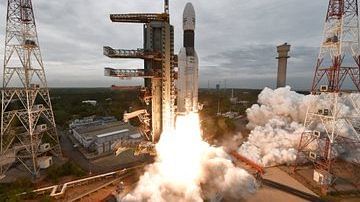It’s time again for the cost of India’s space missions to start being compared with Hollywood science-fiction movies.
It all started when India’s maiden mission to Mars, Mangalyaan, was found to cost less than the Hollywood movie Gravity. Now, the launch of Chandrayaan-2, India’s second Moon mission, is being highlighted as “cheaper than Interstellar”.
What does this obsession with cost suggest? It might be the intent to provide the Indian taxpayer with a sense of how efficient the government’s investment in such a mission really is. Such comparisons are also used in the US with cultural tidbits that an average American can relate to, such as ‘NFL stadiums cost taxpayers more than exploring Jupiter’s moon’ or ‘The F-35 fighter will cost more than sending humans to Mars’, etc.
Using such comparisons begs the question: Are we as a country not confident in investing in our scientists and engineers?
Also read: India’s Chandrayaan-2 matters, but don’t dream about moon picnics with friends just as yet
Discoveries matter more than cost
Going to space to discover something is expensive for any country, not just India. The initial cost for the Hubble Space Telescope was projected to be $400 million. By the time it was launched, the telescope cost about $4.7 billion, and had serious problems with its optical system. Instead of settling for poor quality data, policy-makers decided to get an astronaut crew to repair it.
Twenty years since its launch, the Hubble mission has cost an estimated $10 billion. However, it has made more than 1.3 million observations, and its contribution to science includes pinning down the age of the universe itself to 13.8 billion years and determining the rate at which the universe is expanding, the discovery of the two moons of Pluto, Nix and Hydra, which helped create a 3D map of dark matter, etc. Hubble’s discoveries have overshadowed the fact that it turned out to be 25 times more expensive than initially expected.
How many of us can tell what the scientific mission of Chandrayaan-2 is? The peril of persisting with this “kitna deti hai” (how much mileage does it give) line of questioning is that the average citizen will continue looking out for these fancy one-line comparisons than the scientific import of such missions.
This can have a negative influence on policymakers. Take, for example, the fact that there’s still no estimate for how much water is present on the Moon. If India decides to develop Chandrayaan-3 to map exact quantities of water over either of its polar regions, the cost of the mission may easily be five to 10 times the cost of Chandrayaan-2. But if the public only cares about the price tag, not the value of the discovery, policymakers would not be able to back such a mission.
There is a clear case here for the space science community in India to take up the responsibility of spreading the word about scientific discoveries, rather than meaninglessly boasting about how cheap the missions are.
Also read: Here is what makes Chandrayaan-2 special
The writer is a space industry expert and founder of NewSpace India, a networking community for space-related developments in India.
